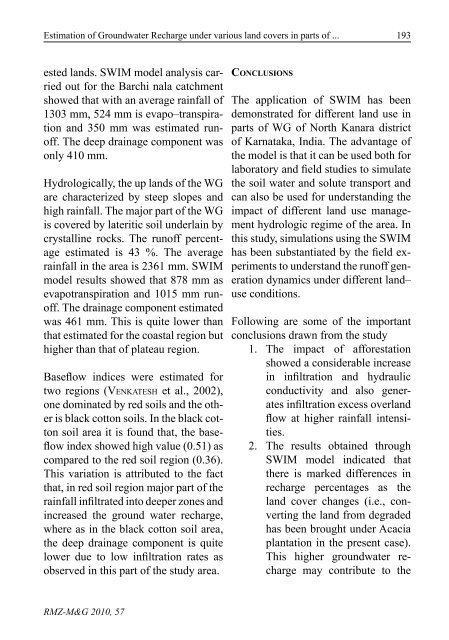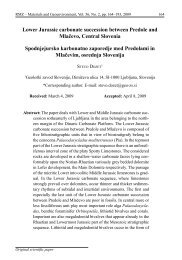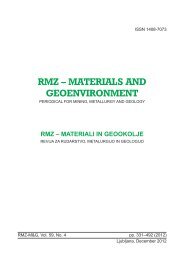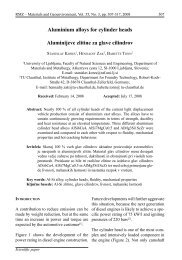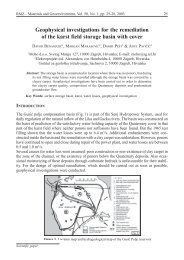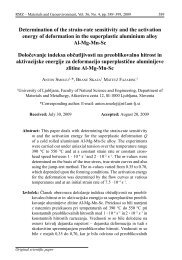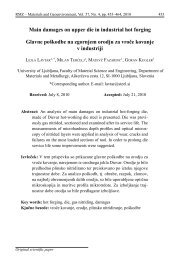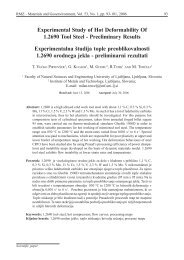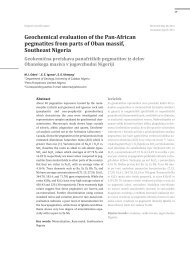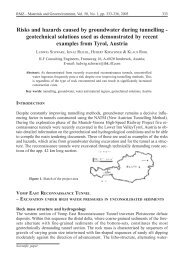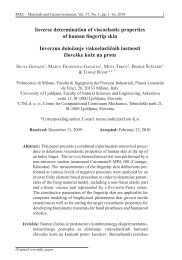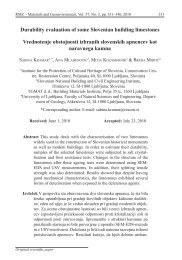Estimation of Groundwater Recharge under various land ... - RMZ
Estimation of Groundwater Recharge under various land ... - RMZ
Estimation of Groundwater Recharge under various land ... - RMZ
You also want an ePaper? Increase the reach of your titles
YUMPU automatically turns print PDFs into web optimized ePapers that Google loves.
<strong>Estimation</strong> <strong>of</strong> <strong>Groundwater</strong> <strong>Recharge</strong> <strong>under</strong> <strong>various</strong> <strong>land</strong> covers in parts <strong>of</strong> ...193ested <strong>land</strong>s. SWIM model analysis carriedout for the Barchi nala catchmentshowed that with an average rainfall <strong>of</strong>1303 mm, 524 mm is evapo–transpirationand 350 mm was estimated run<strong>of</strong>f.The deep drainage component wasonly 410 mm.Hydrologically, the up <strong>land</strong>s <strong>of</strong> the WGare characterized by steep slopes andhigh rainfall. The major part <strong>of</strong> the WGis covered by lateritic soil <strong>under</strong>lain bycrystalline rocks. The run<strong>of</strong>f percentageestimated is 43 %. The averagerainfall in the area is 2361 mm. SWIMmodel results showed that 878 mm asevapotranspiration and 1015 mm run<strong>of</strong>f.The drainage component estimatedwas 461 mm. This is quite lower thanthat estimated for the coastal region buthigher than that <strong>of</strong> plateau region.Baseflow indices were estimated fortwo regions (Venkatesh et al., 2002),one dominated by red soils and the otheris black cotton soils. In the black cottonsoil area it is found that, the baseflowindex showed high value (0.51) ascompared to the red soil region (0.36).This variation is attributed to the factthat, in red soil region major part <strong>of</strong> therainfall infiltrated into deeper zones andincreased the ground water recharge,where as in the black cotton soil area,the deep drainage component is quitelower due to low infiltration rates asobserved in this part <strong>of</strong> the study area.ConclusionsThe application <strong>of</strong> SWIM has beendemonstrated for different <strong>land</strong> use inparts <strong>of</strong> WG <strong>of</strong> North Kanara district<strong>of</strong> Karnataka, India. The advantage <strong>of</strong>the model is that it can be used both forlaboratory and field studies to simulatethe soil water and solute transport andcan also be used for <strong>under</strong>standing theimpact <strong>of</strong> different <strong>land</strong> use managementhydrologic regime <strong>of</strong> the area. Inthis study, simulations using the SWIMhas been substantiated by the field experimentsto <strong>under</strong>stand the run<strong>of</strong>f generationdynamics <strong>under</strong> different <strong>land</strong>–use conditions.Following are some <strong>of</strong> the importantconclusions drawn from the study1. The impact <strong>of</strong> afforestationshowed a considerable increasein infiltration and hydraulicconductivity and also generatesinfiltration excess over<strong>land</strong>flow at higher rainfall intensities.2. The results obtained throughSWIM model indicated thatthere is marked differences inrecharge percentages as the<strong>land</strong> cover changes (i.e., convertingthe <strong>land</strong> from degradedhas been brought <strong>under</strong> Acaciaplantation in the present case).This higher groundwater rechargemay contribute to the<strong>RMZ</strong>-M&G 2010, 57


